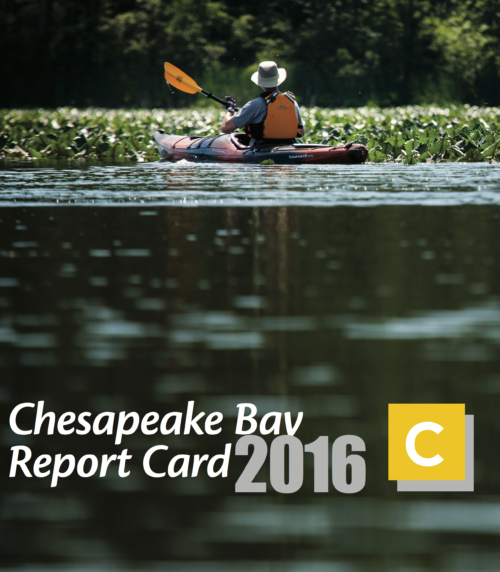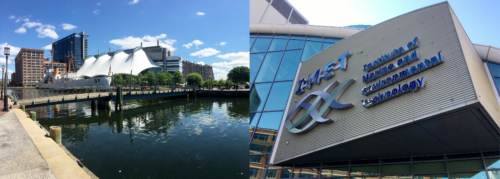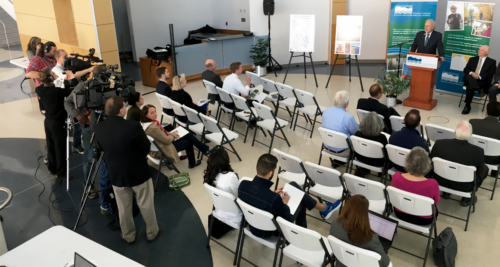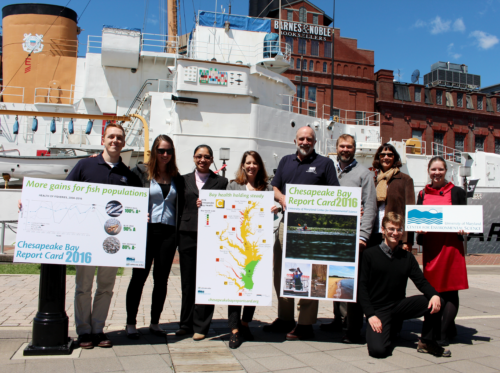Chesapeake Bay report card released in Baltimore
Bill Dennison · 
I was joined by our Master of Ceremonies, Don Boesch (President of the University of Maryland Center for Environmental Science), Ben Cardin (the senior United States senator from Maryland), Nick DiPasquale (Director of the Chesapeake Bay Program), Ben Grumbles (Maryland Secretary of Environment), and Mark Belton (Maryland Secretary of Natural Resources) in presenting the 2016 Chesapeake Bay Report Card. Our event was held at the Institute of Marine Environmental Technology in Baltimore's Inner Harbor on a cool sunny day.

This is the eleventh year that we have produced the Chesapeake Bay report card. After many years of reporting degrading conditions, we have had the pleasure of reporting improving conditions for the past four years. This year's report card continues this trend of good news. We are seeing the expansion of aquatic grasses, improving water clarity, shrinking of the oxygen deficient bottom waters, and best of all, healthier populations of fish and shellfish. These aspects of improvements are manifested in the 2016 Chesapeake Bay report card.

The only reason that we can produce this report card each year, including back-calculating scores into the 1989s, is due to the Chesapeake Bay Program partnership. This partnership provides funding and expertise to send dozens of people out in boats throughout the year to collect samples, send planes into the air to conduct aerial surveys, and then analyze the samples and interpret the data. This coordinated effort is the envy of programs around the world and the Chesapeake Bay Program structure continues to be emulated. We have called Chesapeake Bay our "National Treasure", but we need to recognize that the Chesapeake Bay Program itself is also a "National Treasure."

In viewing the improving trends in report card scores, we can see that the science-based restoration effort that the Chesapeake Bay Program partnership is coordinating has led to the management actions that are starting to bear fruit. Out of the fifteen reporting regions, eight regions are significantly improving. In particular, the regions which have traditionally been extremely compromised like the Patapsco and Elizabeth Rivers are improving. This bodes well for the future iterations of the report card.

We are announcing a new partnership with the National Fish and Wildlife Foundation (NFWF) for producing and improving the Chesapeake Bay Report Card. NFWS provides a competitive grant program for local municipalities and non-government organizations to develop innovative ways to reduce pollution into Chesapeake Bay. We look forward to expanding the Chesapeake Bay report card effort to encompass the places and issues that NFWS grant recipients can relate to in future iterations.
But in spite of these good news stories, we cannot declare victory. Our patient, the Chesapeake Bay, may have moved from the emergency room in critical condition into the intensive care unit in serious condition, but we cannot stop closely monitoring its health. We also cannot back off the nutrient diet that the doctors have prescribed now that it is starting to improve its health. There are emerging issues that still need to be addressed. We will need a vibrant Chesapeake Bay Program to continue our journey toward the restoration of this national treasure.

About the author
Bill Dennison

Dr. Bill Dennison is a Professor of Marine Science and Interim President at the University of Maryland Center for Environmental Science (UMCES).